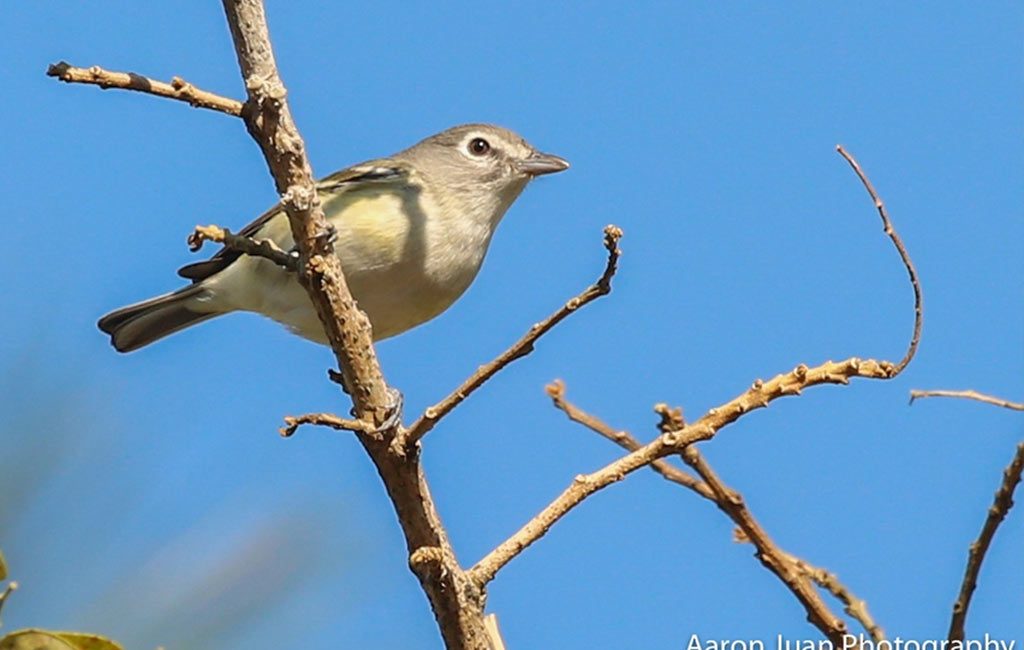The Mountain Pine Ridge Reserve is one of the most unique habitats that can be found in Belize. The reserve is mainly granite based with an abundance of Caribbean Pine, Oaks, tiger fern, grasses, sedges and some broadleaf patches far and wide. Mountain Pine Ridge averages in elevation from 1,312 to 2,296 ft. which lends itself to scenic views at every angle for gazes to fall upon.
The combination of these ecosystems and elevation makes for a unique cross section of bird species, many that are unique to this habitat.
So, what birds should you be on the lookout for? Here are five species to get you started:
Rusty Sparrow
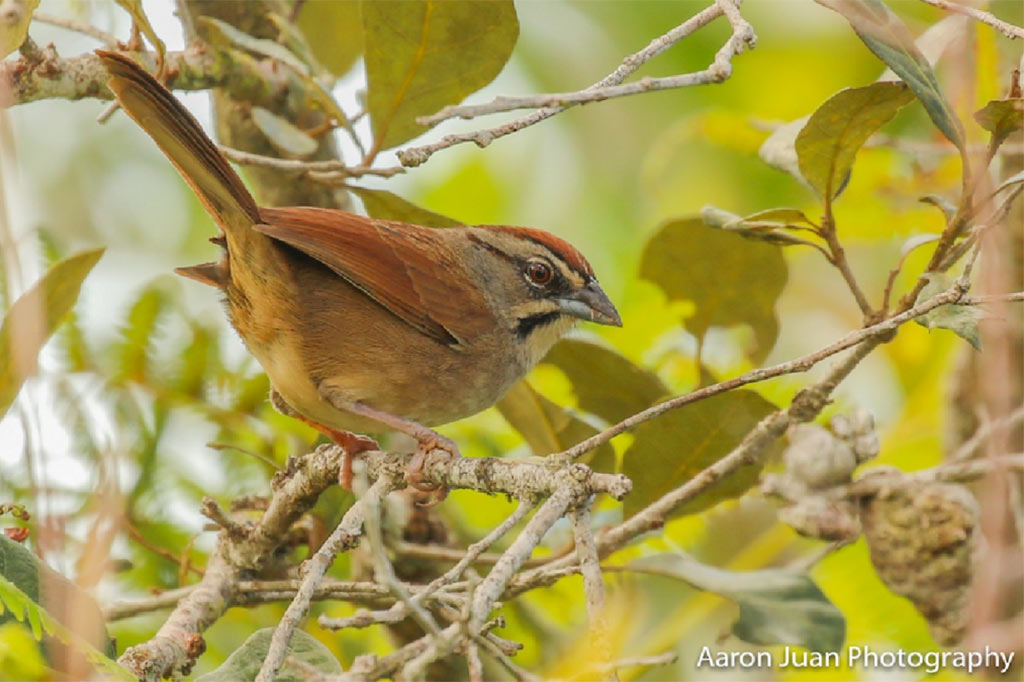
The Rusty Sparrow is a large “rusty” sparrow that enjoys the low and scrubby vegetation found in abundance at Pine Ridge. They can be skulking making them difficult to see but with some patience, you can get great looks and photo opportunities of this handsome sparrow. They can usually be located by their loud varied songs and calls.
ID tips: This is a very chunky bird, they have intricate face patterns with a neat rusty cap and mantle, grayish bill, and pink legs. They’re often found near or on the ground where they may prefer to stay hidden in shrubs or tiger fern clumps. Being familiar with the calls can help to locate hidden birds.
Plumbeous Vireo
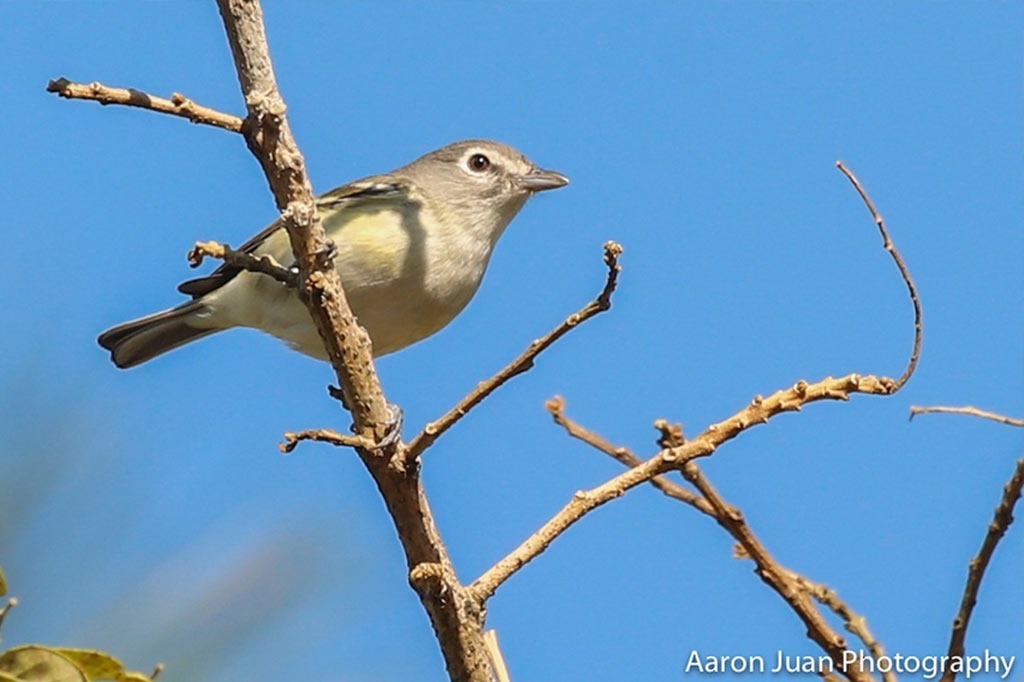
The Plumbeous Vireo is a very unique bird as it may be an endemic species that is restricted to Belize. The Notius subspecies which occur in the Mountain Pine Ridge averages smaller. Some individuals may have a greener mantle and yellower flanks than that of the more widespread Montanus subspecies. More work would need to be done to confirm or deny this. It can be found throughout the majority of the pine ridge as they give their typical vireo warble from the treetops. The name Plumbeous comes from their coloration.
ID tips: Like most Vireo’s, their coloration is very plain, they are gray above with two moderate white wing bars, bold white spectacles, and have gray legs. Some individuals may have an extensive yellowish hue on the flanks which can be reminiscent of the much rarer and migratory Blue-headed Vireo so extra caution should be taken when observing these birds in during winter.
Rufous-capped Warbler
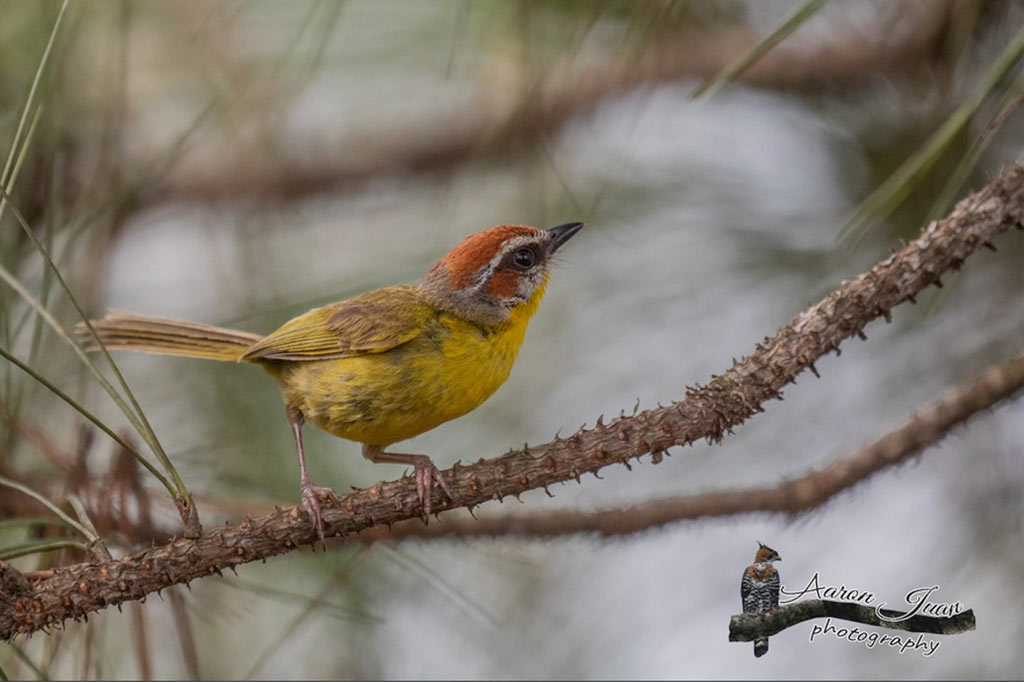
The Rufous-capped Warbler is a beautiful passerine of the pine-oak forest. They’re very active, often found flicking their wings and tail as they move through the low shrubs and ferns. The subspecies found in Belize is a lot more yellow in comparison to other subspecies. They give numerous calls and can be located easily by following these calls. Usually in small flocks, they make great photo subjects.
ID tips: Distinct, chestnut cap and auriculars, whitish supercilium, gray nape, and yellow body. Often found actively feeding with its tail in the cocked position. One of the few resident warblers they can be found all year round. It was recently split from Chestnut-capped Warbler.
Hepatic Tanager
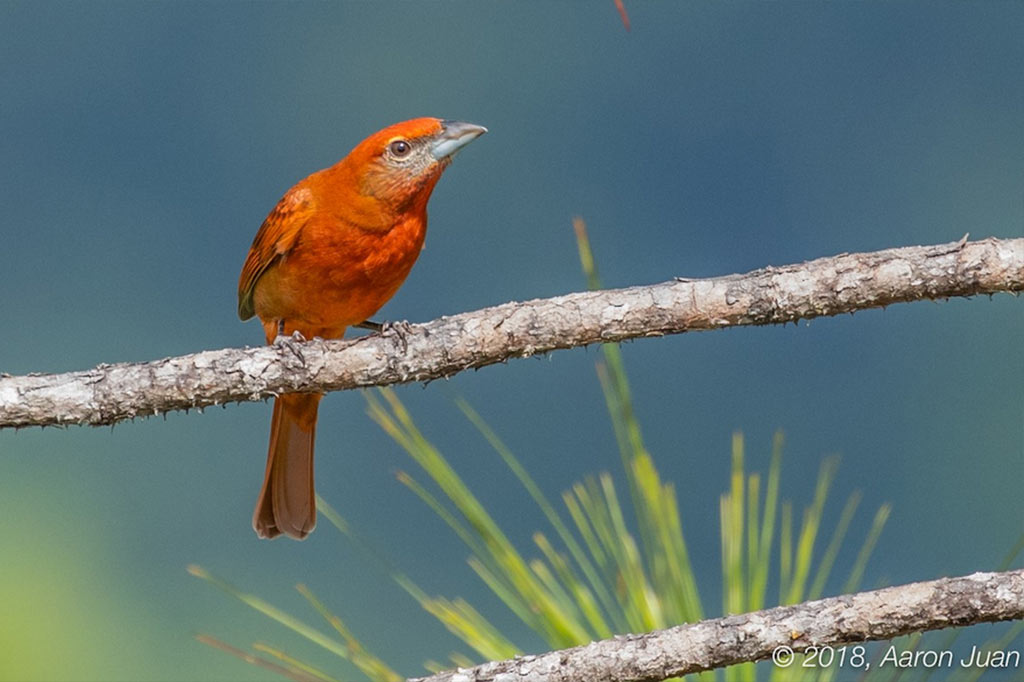
The Hepatic Tanager is a medium-sized tanager usually found in pairs or small flocks. Their home can be found in most pine habitats throughout the country but can be easily seen in the Mountain Pine Ridge. The males are reddish whereas the females are yellow. Their name is based on the liver red color of the male.
ID Tips: The only uniformly colored Piranga tanager found year-round in the pine ridge. The males are red-orange and the females are a dull yellow, both sexes have dusky auriculars and a stout, grayish bill. These field marks can be used to separate them from wintering Summer Tanagers.
Solitary Eagle
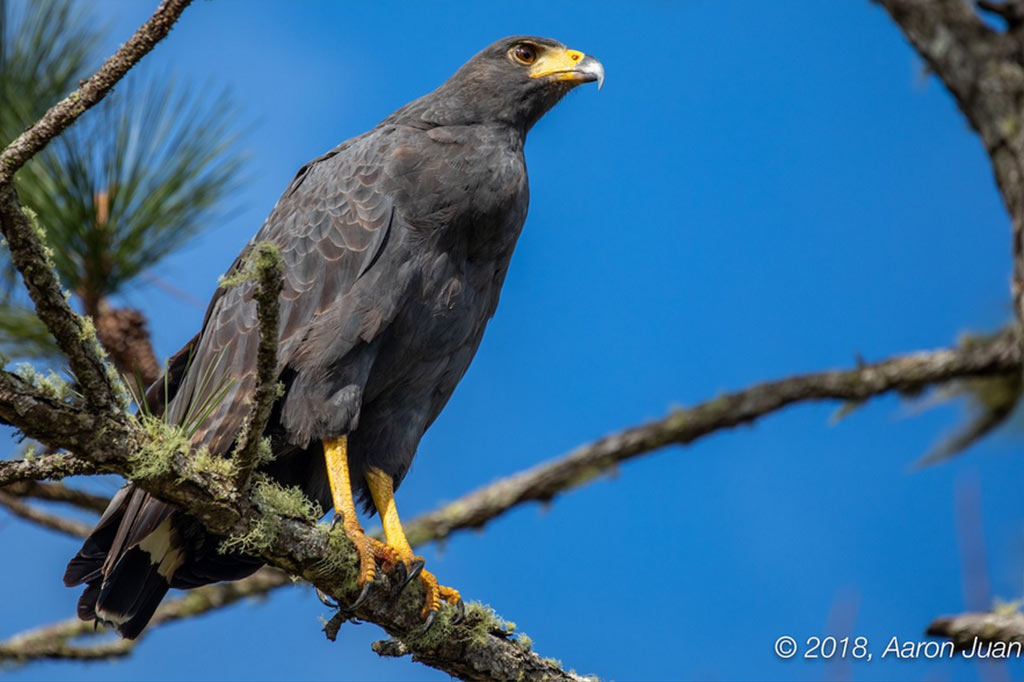
The Solitary Eagle, is one of the rarest birds and most sought after in the region. It is the largest and rarest of the 3 Buteogallus raptors that occur in Belize. The best place to see these birds in Belize is in the Mountain Pine Ridge. Although it is not an easy task to locate these birds, being in the pine ridge certainly takes your odds up. The only known nest in 52 years was found in a remote section of the reserve in 2011. These are awesome birds, they soar effortlessly on their broad wings and use their large talons to capture and kill their favorite prey, snakes. This is certainly a bird that every birder should try to observe if the opportunity arises.
ID tips: Larger, all dark raptor, single white tail band, yellow legs and cere, large broad wings appear very short-tailed in flight. Care must be taken when identifying especially perched birds, Great Black Hawks can overlap and are very similar but have barring on the legs, their appearance is longer tailed and they have white upper tail coverts.
If you would like to see any of these birds, be sure to reach out to use, we can arrange a birding tour for you in the Mountain Pine Ridge. You can also check out the tour page here https://www.mayawalk.com/belize-birding-tours-mountain-pine-ridge

